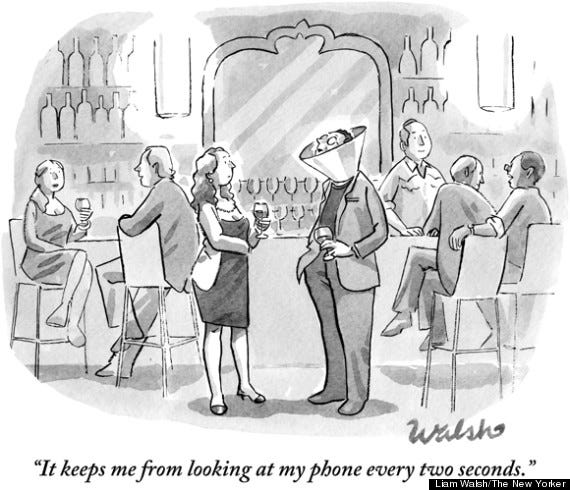You probably heard about the recent initiatives to ban smartphones in schools. California is but the latest state after Florida, Indiana, Louisiana, France, Netherlands, and others to demand phones be kept out of classrooms. If you have a teenager at home, I’m sure you are familiar with the pro and con arguments for restricting smartphones.
Here’s the data: According to recent Pew research, 70 percent of high school teachers believe phone distraction is a “major problem,” and a third of students say they are distracted by digital devices during lessons. On average, US teenagers spend nearly five hours a day on social media, according to a recent Gallup survey. Surgeon General Vivek Murthy, too, warns of a “profound risk of harm” to young people, noting that adolescents 12 to 15 who spend more than three hours a day on social media are at twice the risk of depression and anxiety as nonusers.
However, the solution isn’t as simple as banning all digital devices. Bans have been met with protests from students and from parents who want to be able to reach their kids during the day. Also, the problem isn’t the use of these devices per se, but excessive use and the kind of content students access. Students who spend one to five hours per day on digital devices for learning at school score significantly higher in their mathematics lessons than those who spend no time on such devices, according to the OECD.
What to do?
I spoke with Lukas Müller, the director of a K-12 school in Würenlos near Zurich, Switzerland, which seems to manage the ban effortlessly. “We educate the students about a responsible use of smartphones and apps,” Müller says, which is exactly what the OECD recommends. Through its own school app, Würenlos parents can reach their kid’s teachers at any time, and the 740 students can communicate with each other respectfully. From kindergarten onward, the school supplies students with tablets equipped with content filters and seniors with notebooks loaded with educational software. “Teachers teach the students how to use social media responsibly, for instance, there is never just one administrator in charge of an online group, so one student can’t exclude another student,” Müller gives as an example. From sixth grade onwards, the school invites police once a year to explain cyberbullying and alert students to potential online traps.
And finally, most experts, teachers and parents agree that simply taking devices away is not a successful strategy. Kids need alternatives that prove more enriching than digital temptations. “We have very active sports clubs, a third of our students play an instrument, and the students talk to each other in the breaks,” Müller says about his students.
Now even the kids agree they’re better off without their phones.
Read the full story here on Reasons to be Cheerful!
If you, like me, have trouble keeping your own hands off your smartphone, I highly recommend Cal Newport’s books, especially Deep Work and Digital Minimalism.
I try to follow his method of having at least four uninterrupted hours each day for what he calls “deep work,” focusing on my next book without interruptions.
While we’re talking about reading:
Remember the op-ed I wrote a few months ago about how every action to mitigate climate change matters?
When It Comes to Climate Change, Everything We Do Matters
Scientists say we have all the solutions we need to limit global heating to a 1.5°C increase. So what can we, as individuals, do?
If I didn’t manage to convince you, maybe the New York Times can:
What if Everyone Did Something to Slow Climate Change?
According to the organization Project Drawdown, which advances climate solutions, individual and household actions taken together — from reducing food waste to installing LED lighting — have the potential to reduce about 25 percent to 30 percent in greenhouse emissions needed to avoid the extremely dangerous aspects of climate change.
For instance, if each person living in high beef-consuming countries — like the United States — ate 1.5 fewer burgers a week, the need for agricultural expansion and deforestation would be eliminated and greenhouse gases significantly reduced.
And lastly, after my own dog nearly died of kidney failure I wrote about the plight of rescue dogs for my German newspaper, die Süddeutsche Zeitung: Die tierische Wegwerfgesellschaft
If you don’t read German, I highly recommend the investigative research by the LA Times that tracked the market for puppies.
Before you buy a puppy, check out your local rescues. See if you can foster a dog.
And if you’re near Los Angeles, check out accounts like Rita Earl Blackwell’s who showcases gorgeous, young, healthy dogs (and cats) in local shelters, like this one:
Cheerfully,
Michaela






Moby did a music video starring smartphones for his song "These systems are failing"
Link: https://www.youtube.com/watch?v=VASywEuqFd8
Some weeks ago a search engine put me to the blog "Once Upon A Written Word" by Rachel Weisbrot from Canda. Beside what I was looking for, I also found her poem about digital culture. It is crafted with great precision, the first letters of each line spell out its title "incurvatus in se".
Incurvatus in se
IPad, iPod, iPhone, I gaze,
Netted in an endless downhill maze,
Captive to the entertaining tool,
Under a heavy yoke, with feeds for fuel.
Riveted by the endless scroll of news,
Victims of the same old stale peruse.
A hundred checks and glances every day;
Time slips and slides and vanishes away.
Unwittingly we stare down at our screens,
Sedentary, proud slaves to our machines.
In Internet there’s hope for immortality:
No need to search in meaningless reality.
Save us from the god to which we bow:
End the endless curve we inward plow.
Link: https://onceuponawrittenword.wordpress.com/2021/07/31/incurvatus-in-se/